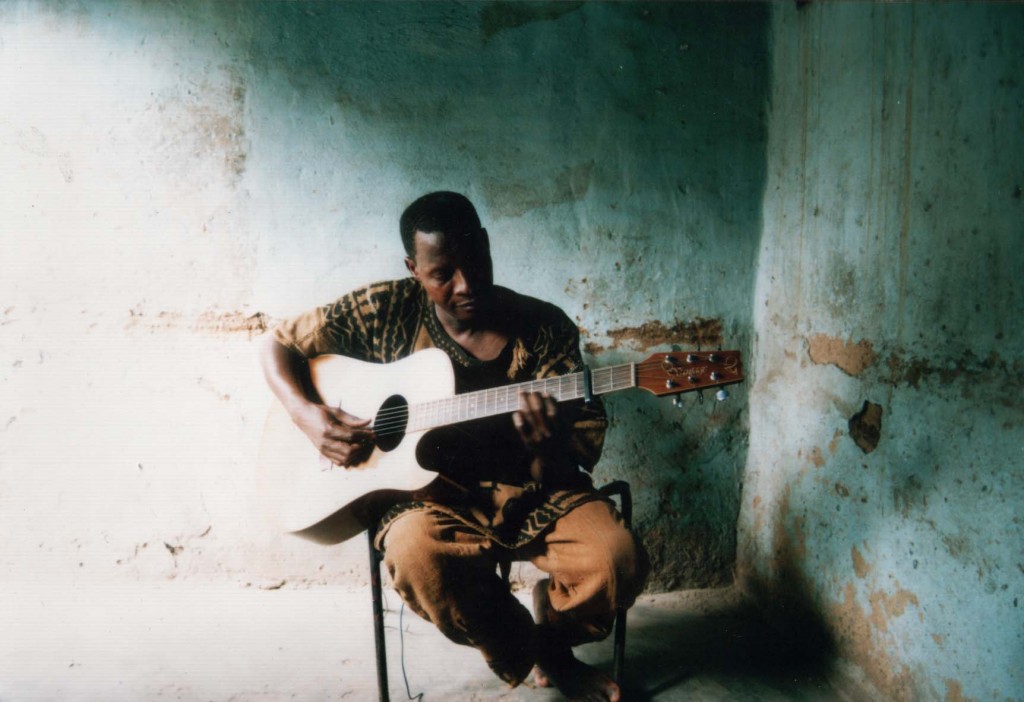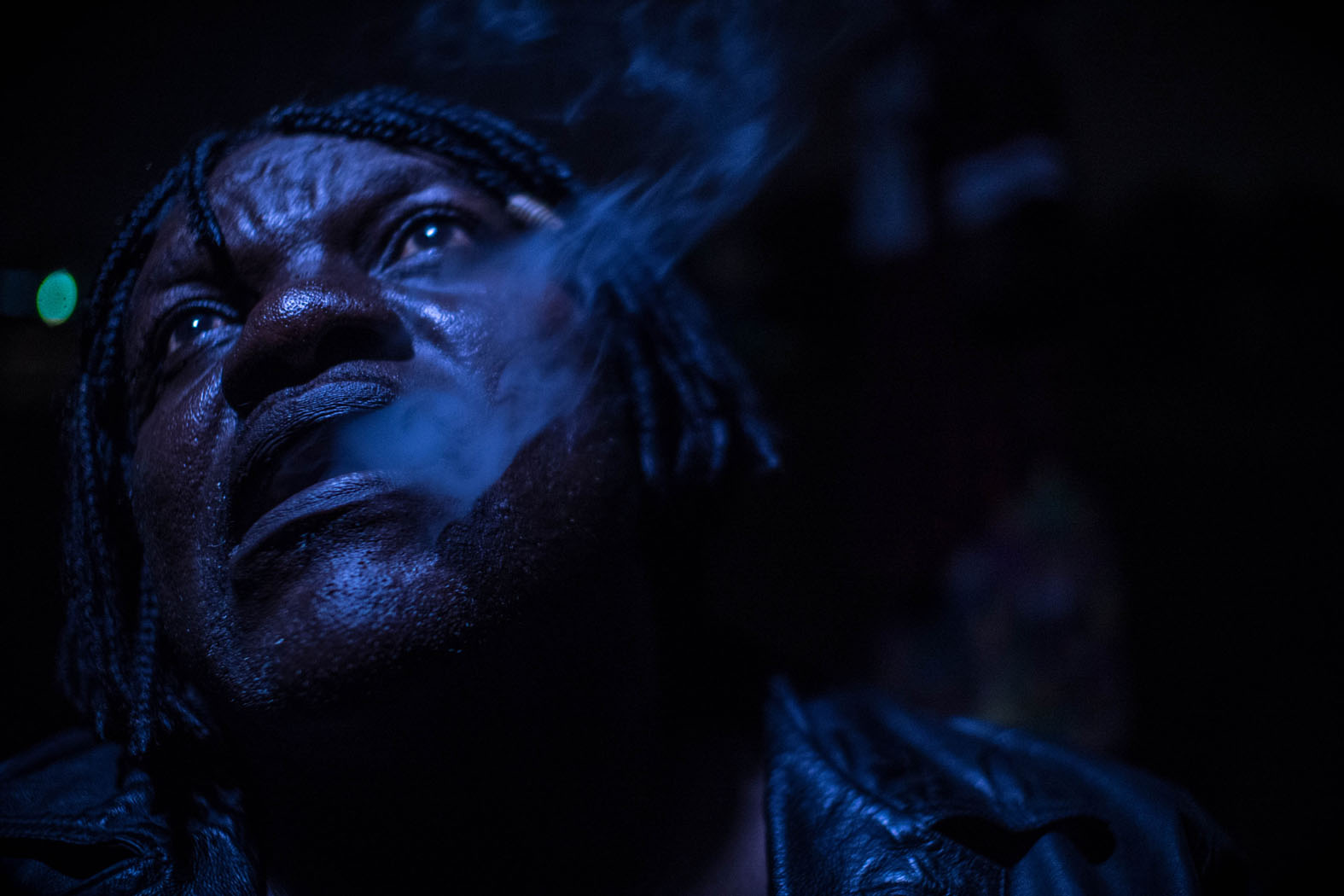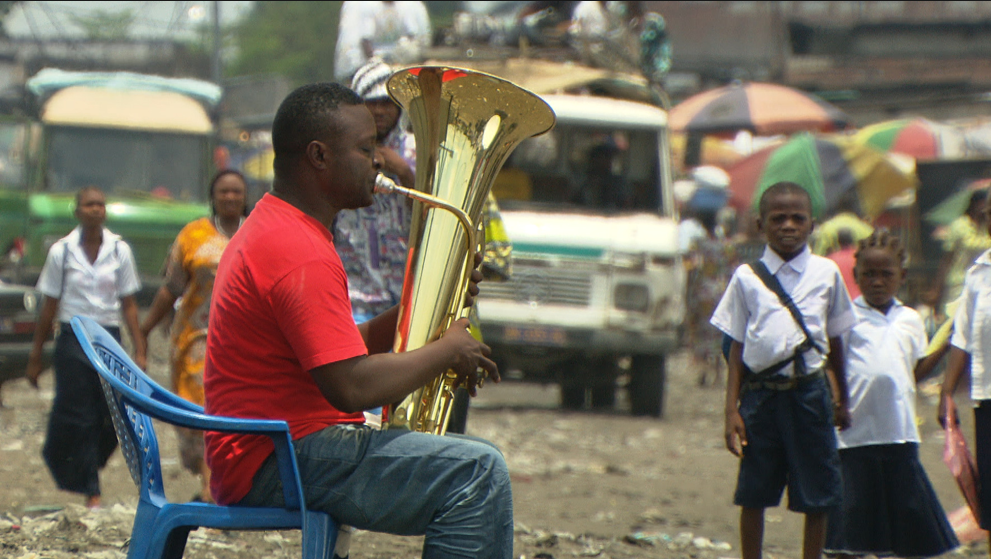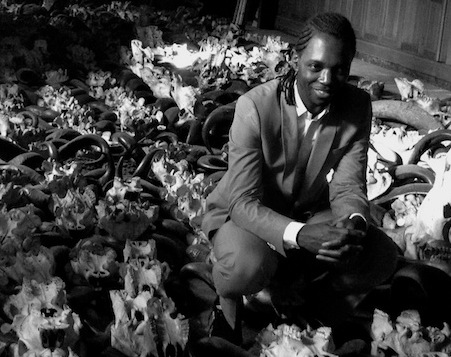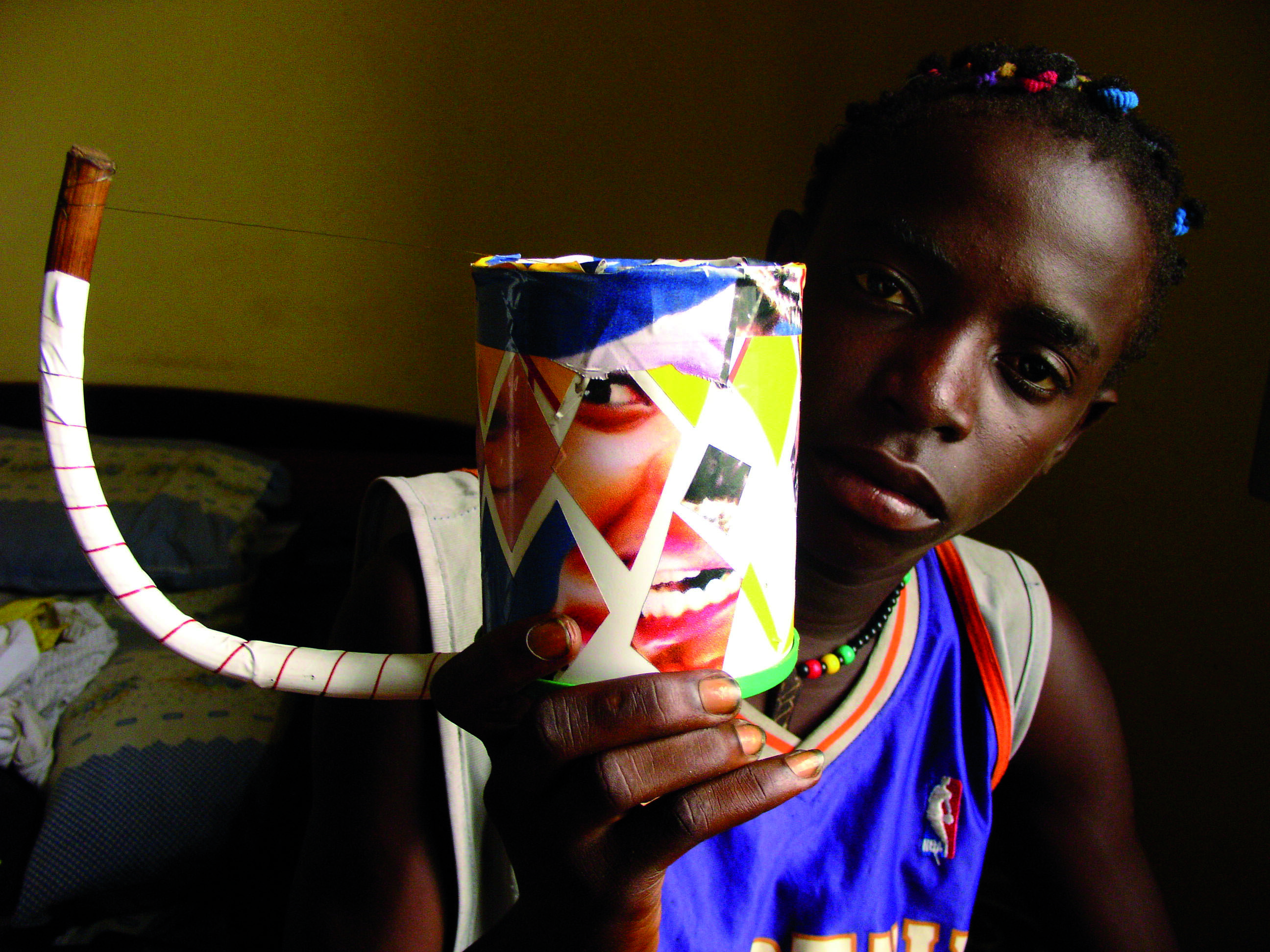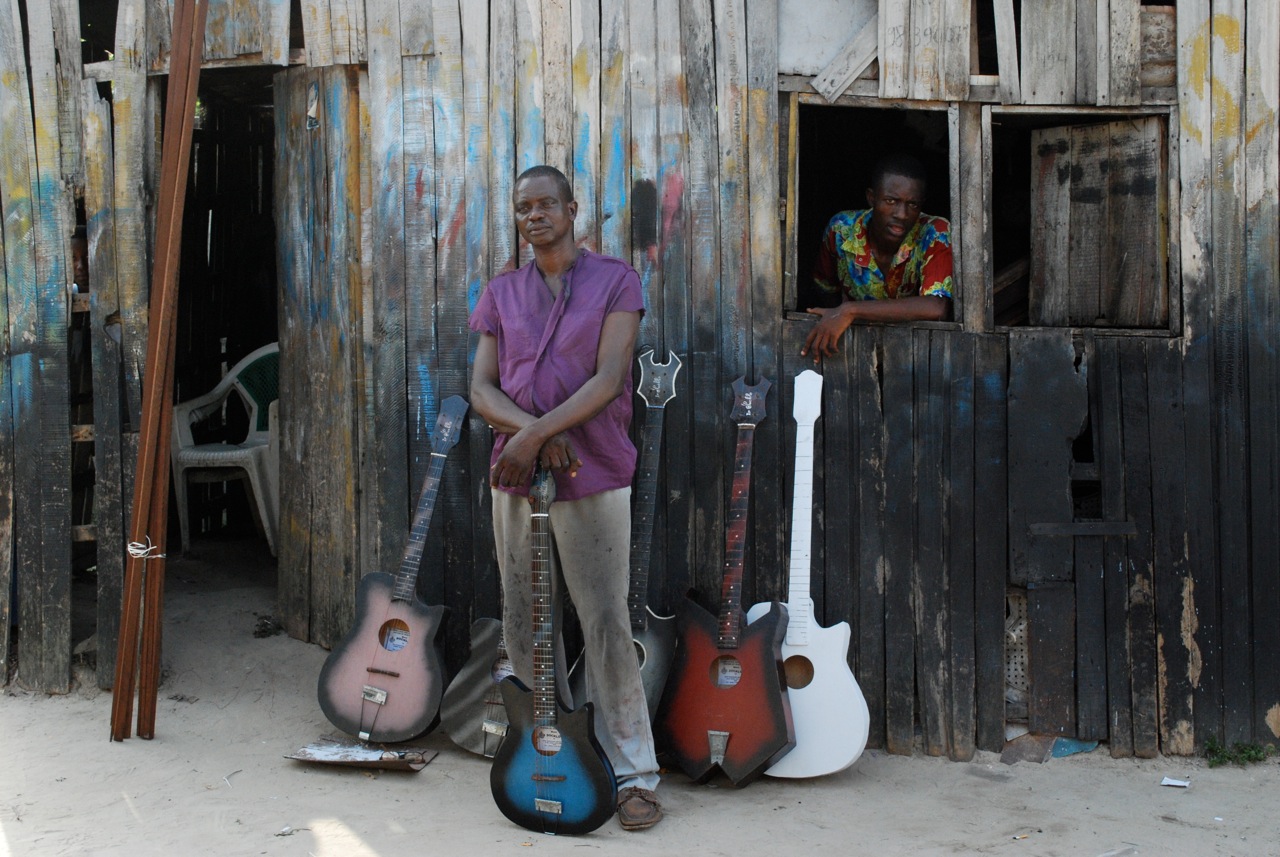When he was a child, Sidi Toure was told to go and hunt for bats in the Tomb of the Askia. On a good day, he and his harum scarum comrades could bring back ten or more, which made a tidy feast for the family. The monument wasn’t far from his home in the Sané district of Gao, an old trans-Saharan entrepôt on the Niger River that is now the capital of northern eastern Mali. A black and white postcard from colonial days depicts the tomb in a state of geometrically chiselled splendour, pyramidal in shape but stepped like an irregular ziggurat. Today, erosion by the annual rains and desert winds has turned it into the bearded sister of the Great Pyramid of Giza, sensuously curved and bristling with acacia branches that protrude from its adobe walls. “I spent my childhood round about the tomb,” Toure tells me. “It was my ‘school’ and I know it like the palm of my hands.”
It’s hard to fathom what this most striking relic of the Songhoy Empire means to Sidi Toure and millions of other Songhoy like him. The empire was founded more than five hundred years ago by Sunni Ali ‘Ber’ (‘The Great’) and brought to a dazzling climax in the middle of the 16th century by one of his generals, Mohammed Askia Toure, before succumbing to the invading armies of the Sultan of Morocco. It was ruled according to the precepts of Islam, with a meritocratic government administration and educational establishments that attracted scholars from every corner of the Muslim world. The collective myths and memory of the Songhoy people, their deepest pride, find their focus in the Tomb of the Askia. Like the manuscripts of Timbuktu, its very existence trumps those who like to think that pre-colonial African history was devoid of civilisation.
In the summer of 2012, a group of young Songhoy men formed a vigilante guard to protect the tomb from the hard line Islamist mujahedeen of the Movement for Oneness and Jihad in West Africa, most commonly known by its French acronym MUJAO, who had taken control of Gao and imposed an joyless diet of fear and shari’a law on its populace. Les barbus – the bearded ones – were pulverising the tombs of Sufi saints in Timbuktu, 400 kilometres up river, and the citizens of Gao had good reason to fear for their beloved monument.
The Jihadi assault on local culture didn’t limit itself to tombs of course. In August 2012, a heavily bearded spokesman for MUJAO announced on a radio station in Gao that all music except for Quranic chanting was banned throughout northern Mali with immediate effect.
When I ask Sidi Toure for his reaction to the ban, he shakes his head and dishes up a tired little smile. “Even at the time of the Prophet there were griots who sang praises,” he says. “So I don’t see how people can come with other ideas to ban music. And what’s more, Gao is a place of Islam. The manuscripts of Timbuktu attest to that. Our grandfather Askia – it was because he loved Islam that he brought architects from Egypt. When you see the tomb of the Askia it has a pyramidal shape. That means that the architect came from Egypt to build things like that. We adore the same God but it’s moderate Islam that we love.”
The shape of the Tomb of the Askia isn’t the only thing that ancient Egypt gave to the Songhoy people. Almost uniquely amongst the major ethnic groups of the Sahel, the Songhoy still possess a rich pantheon of pre-Islamic deities or spirits which they call the Torou. The founders of this supernatural dynasty are commonly believed to have come from Egypt. One of their offspring was the water goddess and ‘original’ Songhoy mother, Harakoy Dicko, whom Sidi Toure refers to as “the siren”. Her first-born son is Marou Kirey: Marou ‘The Red’, and the youngest of her seven children is Dongo, the god of lightning. To commune with these spirits, humans must be eased into a state of trance by means of rhythm, song and dance. An entire corpus of music exists for that very purpose and the Songhoy call holey.
“To find Kirey, you have to find Dongo,” Sidi Toure explains. “Or to find Dongo, you have to find Kirey. When one comes along, infallibly, the other will also come. In Gao, when the countryside has a problem due to lack of rain, people have recourse to the holey. They take their violins, their calabashes and they go six or seven kilometres from Gao. There they beat their drums and before they get back to Gao, the rain will come.”
In 1984, Sidi Toure, who was then in his mid twenties, won a prize at the prestigious Biennale, Mali’s premier national music, theatre and dance competition, with an original composition called ‘Marou Kirey’. Like most of his music, the song was a blend of modern instruments and orchestration, holey and takamba, the loping rhythm of seduction that is Gao’s other contribution to Mali’s musical treasury.
Toure was already a star on his home turf and lead singer with Gao’s regional orchestra, the Songhoy Stars. Alongside his musical mentors Ali Farka Toure and Ibrahim Hamma Dicko, he was busy hauling Songhoy music and culture out of the northern sands and into the national spotlight. No easy task. In those days the Manding music of the south hogged the airwaves and printing presses. Music from the north – be it Songhoy, Touareg, Arab or Peul – had to struggle to earn playtime and respect.
Although, like most Songhoy, Sidi Toure rails against his Touareg neighbours for fighting rebellion after rebellion against the central government in Bamako and ripping the delicate silk of social relations to shreds in the process, he feels some sympathy with their fight for cultural recognition. In fact, take away the issue of independence for the north, and it’s surprising how much Songhoy and Touareg can agree about, despite their skewed image as traditional enemies.
“One cannot say that all that those Touareg are saying is false,” Toure tells me. “There are realities out there. You can colonise every aspect of me, but culturally you cannot colonise me. I refuse. I have a culture. Air time on TV – that must be open to everybody. Because TV is national. There’s no question of it only being for the Bambara or whatever.”
If his struggle is to put Songhoy culture on the national and international map, then Sidi Toure is winning. Not only is he well known throughout Mali, but his lilting Niger ‘hymns’ have colonised ears from Shanghai to Sacramento, and points in between, both ways.
If it were possible to render the term ‘easy listening’ into one that connoted only positive praise, then it would serve well to describe his music. Toure’s signature simplicity and elegance are in full gentle force on his new album Alafia (Thrill Jockey); the acoustic guitars, flutes, ngoni lute and voices meshing with a lilt and lack of excess to achieve a sensation akin to drifting down some wide and sun-blessed river while your hands trail in the coolness of its waters. Sidi Toure’s music has that ‘roll’ which Andy Kershaw once lamented the lack of in most rock’n’roll; an effortless inner propulsion that, like river currents or the beating heart, seems to be the child of divine physics. Needless to say, it’s the perfect soundtrack for a summer’s day behind the wheel.
Many an awkward label has been cobbled to try and categorise the genre that Sidi Touré’s music belongs to: desert blues, Niger blues, Sahara blues. If a link to American blues does exist then it belongs to the late 17th rather than the late 20th century. “When I released my first album,” Toure says, “I met this American journalist who said ‘Hey, what you’re playing there sounds just like wow wow wow by John Lee Hooker!’ I said to him, ‘But that John Lee Hooker of yours, who on earth is he?’ ‘He’s just a bluesman’ he said. ’Nope, don’t know him,’ I answered. ‘I’m just playing folk music from Gao.’”
Despite the easy caress of that folk music from Gao, Sidi Toure isn’t one to sing sweet nothings into your ear. His oft-repeated mantra of “Politics for politicians, art for artists” doesn’t stop him conceding that music has to be more than a sunbathe on the beach. “The artist has always been a fighter,” he agrees. “When someone tells you to listen to my music, it’s not to make you say ‘Ah, Sidi sings well!’. It’s to make you understand what Sidi is singing about. I fight! Look at the pollution in the Niger River, look at global warming. I sing about those things. I like artists who protest and get involved. Because the artist is the one who speaks out from the highest point about what others are saying at the lowest, whatever the consequences.”
And if there was ever a time when circumstances turned musicians into fighters, whether they liked it or not, it was those ten joyless months when Islamist gunmen gripped northern Mali in their puritanical claws. Lucky then that Sidi Toure wasn’t in his native Gao at the time. He’s been living down south in Bamako since 1992, but Gao and the great river have never stopped flowing through his arteries and neural pathways. You can take the northerner out of the north but you can’t…
Songs on Alafia like ‘Boro Ganda’ (‘My Land’) or ‘Gandyey’ (‘The Spirits’) put you in a pirogue and float you off from one of the many Gao river beaches that Sidi Toure use to frequent as a youth, in the direction of Koïma Hondo, a massive pink dune a few clicks down river that is Ayers Rock to the Songhoy, a place where the spirit-folk congregate far from the eyes of the un-initiated and laugh at our little human absurdities.
It seems strange that Sidi Toure was scorned in his younger days by elders who considered playing music to be a wasteful frivolity, entirely beneath the dignity of anyone bearing the noble name of Toure. “As soon as people say ‘Toure’,” Sidi tells me, “they immediately have a vision of a man with his head in Qu’ranic books.” Strange. The vision the name provokes in me is of a man in billowing blue robes dispensing liquid gold from a Gibson, a Taylor or a Takamine. Apparently, for some of us at least, the Toure name has become synonymous with praising the Almighty and raising the spirits of humankind through music rather than scripture. How lucky we are.
Predictably perhaps, peace is the central theme of Alafia. The name itself means ‘peace’. A devout Touareg friend once told me that if anyone angers or frustrates you, you should recite a incantation, just silently to yourself, every time you think of that person. Translated, it goes something like ‘Peace to all, peace above all, peace’.
Maybe the Songhoy are busy muttering alafia and “peace be to all” under their breaths as they contemplate the ravaged social landscape of their beloved homeland. But then, no one must forget that the river goddess Harakoy Dicko had seven sons in all, each fathered by a man from a different tribe. The ferocious Marou Kirey’s father was a Songhoy but his brother Mahama Surgou was fathered by a Touareg. And where there’s brotherhood there’s always hope.
Andy Morgan. (c) 2013
First published in Songlines Magazine – Feb 2014

